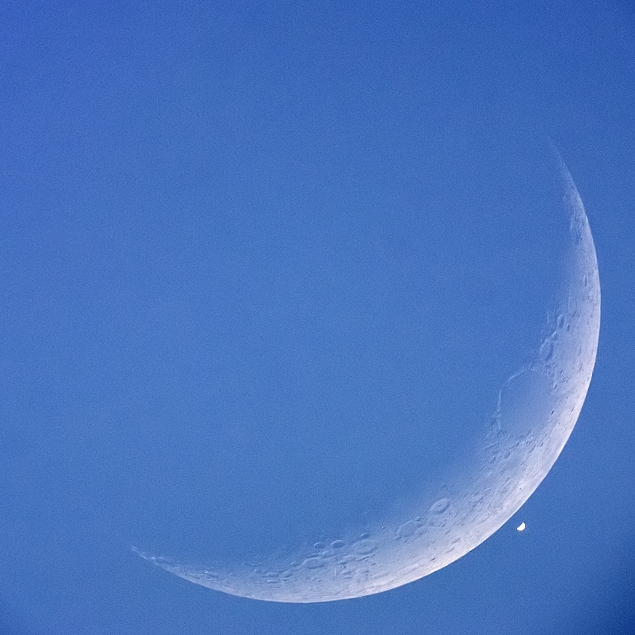
Although occultations can occur in a variety of ways, the heavenly body most often involved is our moon which inevitably
will occult (or eclipse) background stars, other planets as well as asteroids. The study of occultations is important, for
example, for the study of the moon's limb and its profile thanks to the grazing of lunar features such as mountains.
What is perhaps more interesting but not as frequent is occultations involving the moon and one of the planets. Typically
the planets involved are Venus, Mars, Jupiter and Saturn. Due to the great magnitude difference between the moon (any
phase) and any of these planets, the photography of these events can be challenging.
Without doubt, the most stunning example of the moon occulting another body is that involving the sun which, of course,
leads to a solar eclipse. This special example of an occultation is available
elsewhere on this site.
Note: Venus is only second to the moon when it comes to the brightest object visible in the
evening sky and, in fact, is also visible during the day naked-eye when sufficiently away from the sun. For this
particular occultation involving the moon and Venus, the latter was characterized with an apparent diameter of 26.39
arc-seconds, a magnitude of -4.4 and a phase of 44.1% whereas the waxing 3.5-day old crescent moon was at magnitude -7.9
and with a phase of 14.6%. A Baader UV-IR/Cut filter was used to limit the FOV to the visible spectrum.
Note: The human eye has a tendency to focus at a distance of 400 feet when focusing for
"infinity". As a result, many celestial objects which are visible during the day can become a challenge due to the eye's
default focusing for infinity. When the moon is near a celestial object of interest, however, the eye will easily focus
properly for "infinity" when looking at the moon and which in turn will permit for the easy identification of the
(neighbouring) celestial object of interest such as Venus below in broad daylight (bottom right corner of the image below).
Note: For an image immediately before disappearance, click
here.
Note: For a time series illustrating disappearance and reappearance, click
here.
|
Body: Venus Mean Distance (A.U.): 0.723 Equatorial Diam (km): 12,104 Mass: 0.82 x Earth Volume: 0.86 x Earth Orbital Period: 224.701 days Number of Moons: 0 Orbital Eccentricity: 0.007 Orbital Inclination: 3.4° Albedo: 0.65 |
 |
Date: Jun 18, 2007 19:25:00 UT+3 Location: Athens, Greece Equipment: AP 160 f/7.5 StarFire EDF AP 1200GTO GEM Canon EOS 300D Baader UV/IR-Cut Filter Exposure: 1 x 1/800 sec ISO 800 RAW Image Format 3072 x 2048 Image Size Manual Mode Software: Canon FileViewer V1.3.2 Photoshop CS2 Processing: RAW to TIFF (16-bit) Conv Resampling JPG Compression |